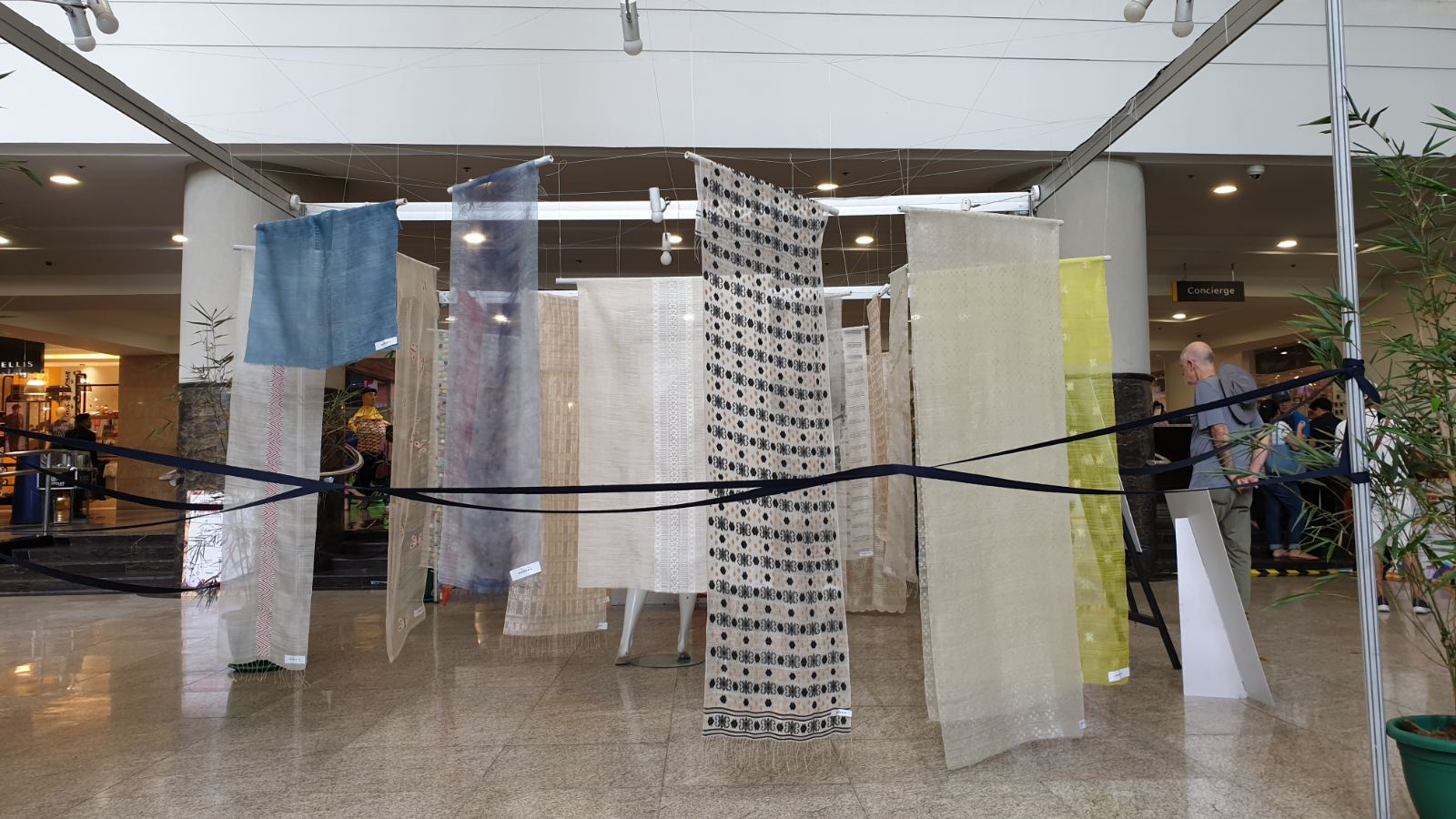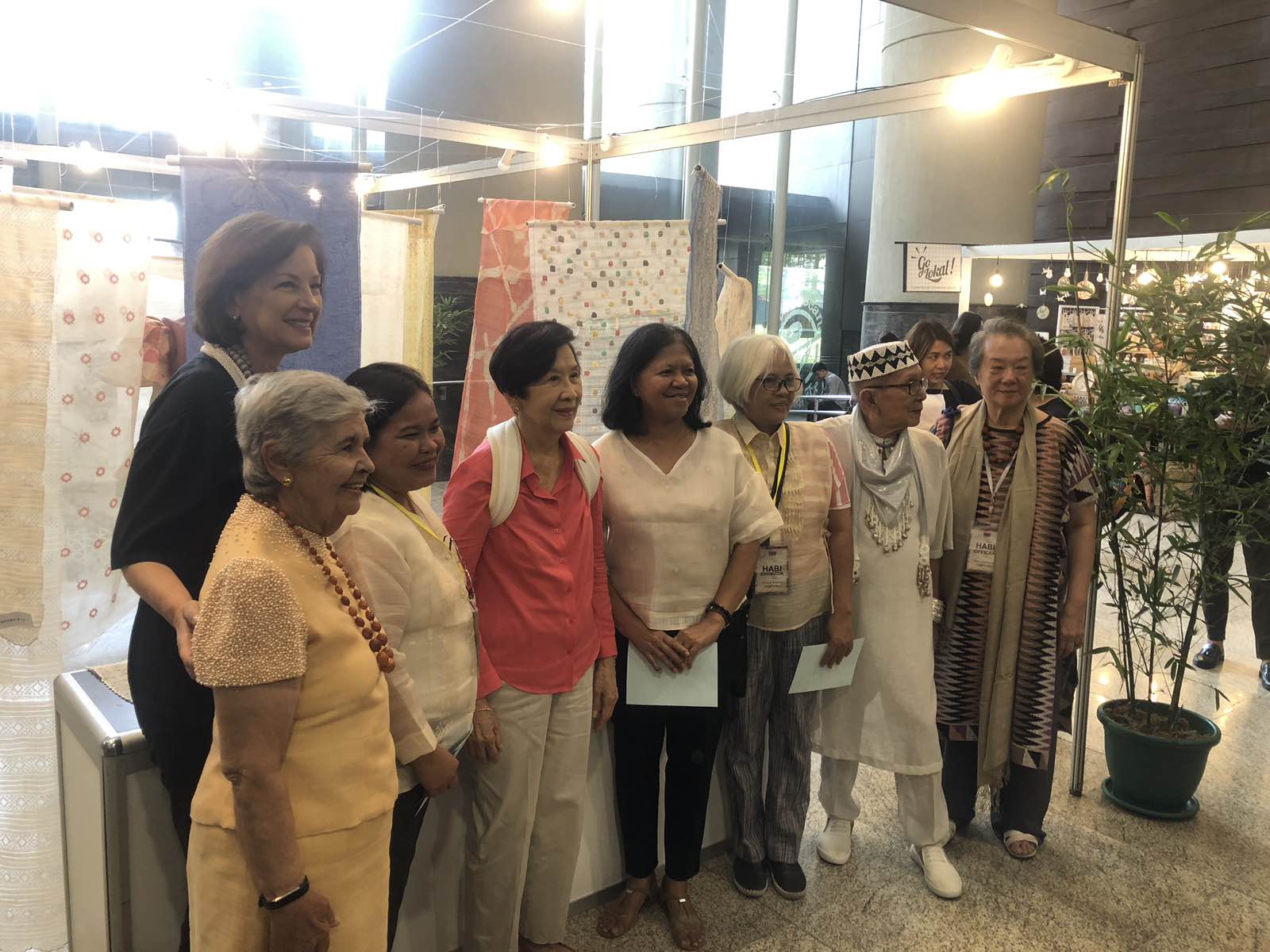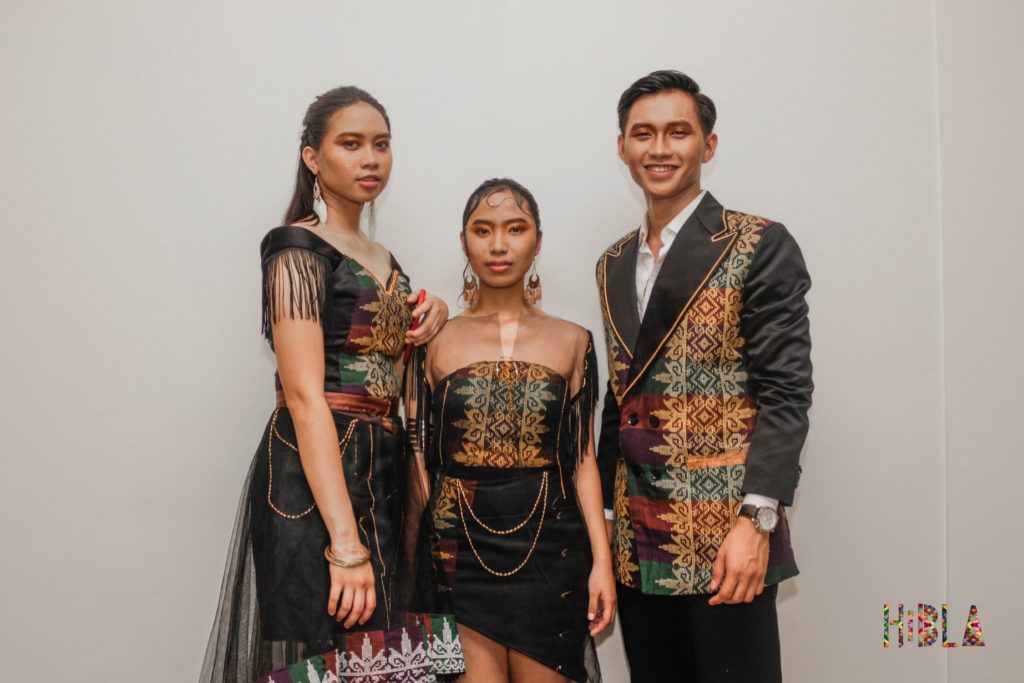FEU promotes fashion and textile heritage for youth with a slate of annual events

Piña cloths exhibited at the Likhang Habi Market Fair
Fashion is a means to express our own character. On a greater scale, it is regarded as the reflection of a society’s culture and values. For Far Eastern University (FEU), fashion is a playground for creativity where the traditional and the contemporary can mingle.
Inspired by FEU Chair Emeritus Dr. Lourdes R. Montinola’s commitment to the local textile industry, the Philippine Textile Council and the university’s Institute of Architecture and Fine Arts (IARFA) recently hosted competitions that promoted local weaving. These are the Piña Weaving competition and the Hibla Fashion Show. The former is on its second year while the latter features work from artisans in Luzon, Visayas, and Mindanao.
HABI using the Piña
To showcase traditional weaving, the Lourdes Montinola Piña Weaving competition was established. The recently held 2019 edition continues the original intention of the event—revitalizing traditional piña cloth production and welcoming fresh ideas from young talents.
For Dr. Montinola, Piña goes beyond being a fruit; it is a symbol of grandeur and a national cultural treasure. This heritage can be seen in the Barong Tagalog and Baro’t Saya.
In her book entitled Piña, Dr. Montinola gives a thorough background of the fruit textile, which began in the Philippines in the early 1500s. The material, which is mixed with cotton or silk was used to make high-end Barong Tagalog and Baro’t Saya through the help of Spanish nuns. Due to its limited seasonal supply then, the material used to be expensive, and could only be worn by the upper class. In the 14th century, owning a pure Barong Tagalog and Baro’t Saya was a status symbol, making the textile material that of royalty.
This year’s winning entry by Raquel Elserio is a fantastic example of this. Her inventive piña-silk shawl enhances the smoothness of the fabric by juxtaposing it with clever knotting of the individual fibers.
Chair Emeritus Lourdes Montinola (fourth from left) and the participants of the Piña Weaving competition

HIBLA of the native
As an integral part of the Textile and Fashion Design class, FEU’s senior students took the reins of the Hibla fashion show. With the theme “Pamana Para sa Kinabukasan,” the show sought to promote culture and heritage preservation. It also highlighted various trade specialties of selected regions such as farming, fishing, and logging to name a few.
The event had five categories: casual wear, semi-formal, formal, couture, and accessories and jewelry. Student groups in each category were tasked to collaborate on reinventing fabrics of the different regions in the country.
The winners took their inspiration from the versatility of Mindanao fabrics such as the Maguindanao textile and T’nalak-inspired accessory pieces. Others were inspired by the symbolic diversity of Iloilo’s Hablon fabric.

Winning Pieces from Group Inauls’ Maguindanao textile formal wear
The institution is now on its second year of promoting Filipino culture through Fashion. FEU aspires to champion a community of socially aware Filipino designers by embracing their local identity.
“We are proud of our fashion design students’ output this year. It is our vision to develop highly motivated and dedicated professionals who respond to the needs of the changing times,” says Dean Raquel Lim Baquiran of FEU IARFA. “Indeed, the students embody that spirit of innovation and creativity, while proudly staying true to their national identity.”


